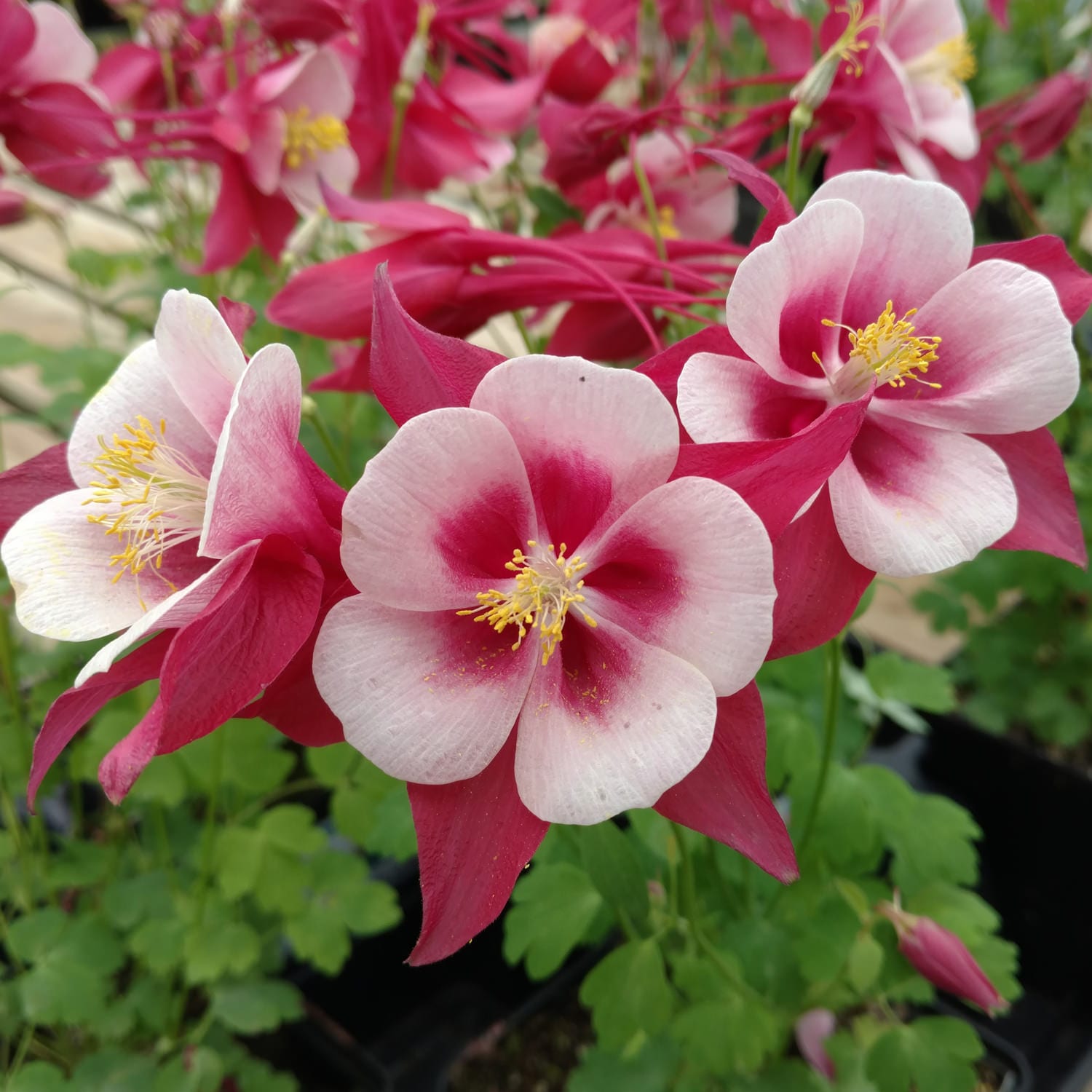
The genus Aquilegia, commonly called columbines or granny bonnets, are the epitome of a classic cottage plant. Recently they have seen a huge resurgence in both their popularity and cultivation and very deservedly so.
Aquilegias are the dearest and daintiest of perennials. Their flowers possess an exquisite and ethereal delicacy in design, stunning in both their endearing simplicity and complexity. Their flowers are funnel shaped with prominent spurs on each of the five petals. With modern hybrids the flowers can be double petalled or even more intricate in further petalled formations. They can exhibit a kaleidoscope of colours, with combinations of pink, blue, violet, red, purple to near black, through to white, cream, yellow and orange. To add even further to their beauty is their accompanying stunning green/grey fern like lacy foliage, reminiscent of maiden hair ferns.
And yes, again with aquilegias, I have yet another nil, nought, zero success rate in growing them. They will thrive and prosper for nearly a full season, and then it’s a sad farewell, they simply pass away and perish in a puff of smoke. Thus, I am so totally envious of those gardeners who have such easy and comfortable success in growing them.
In the New England region of NSW there are two large and expansive established country gardens, for which over a decade which I have been privileged to work and care for. Both demonstrate, with near perfection, a true beauty in their own unique and individual design and choice of plantings. They are Auchinlea and Heatherbrae. Visit them when you can.
In this instance their commonality is they each possess very happy, huge, long, deep and wide naturalised swathes of aquilegias. There are hundreds, even thousands of them and they are not going anywhere. What I cannot get is, they reside in the poorest of soils, rarely watered, never fertilised, with only an annual cutback if they are lucky. In both gardens, they reside under the protection of large aged deciduous trees. That is, they enjoy full sun in winter and good protective shade in summer. They successfully share space with other permanent perennials such as hellebores, heucheras, polyanthus and Japanese anenomes.
The only probable reason for the aquilegias’ easy proliferation is they receive a good thick rich blanket of mulch from the falling autumn leaves supplied from the large expansive canopies of the mature deciduous trees above.
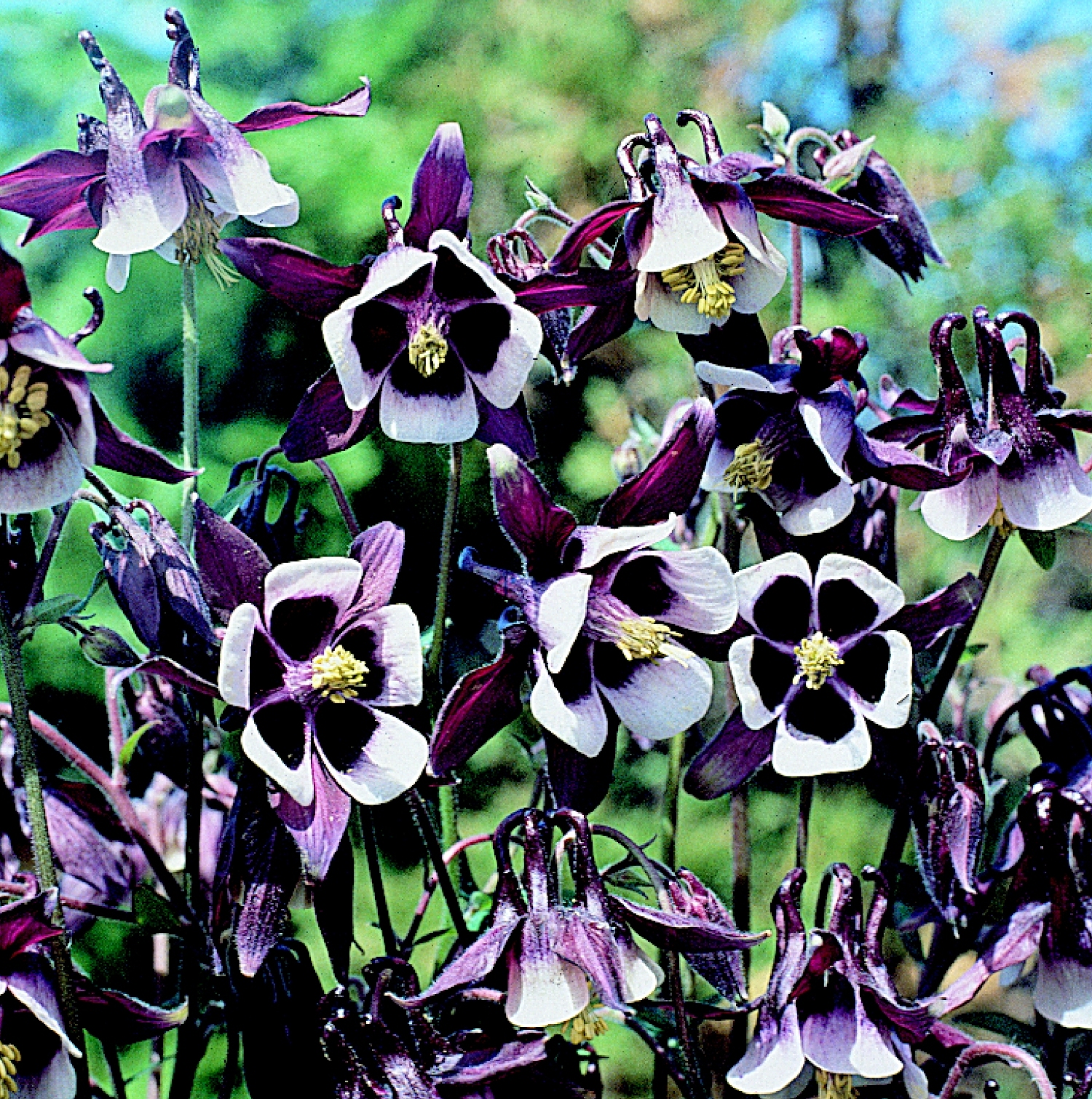
History
The name originates from the Latin ‘aquilegium’ (water gatherer) because dew drops are caught by the leaves. They have been cultivated in European gardens since the Middle Ages. They originate from the mountains of central Europe, North America and Asia.
You may notice in your pursuit of purchasing aquilegias the predominance of Barlow in the names of the varieties, for example ‘Barlow Black’ and ‘Barlow Rose’. Barlow was the granddaughter of the naturalist and evolutionist Charles Darwin. She dedicated her life to the cultivation and creation of new aquilegia hybrids, which still remain popular today. Please note, I cannot quite remember, all those long years ago, where I read this little tit bit of information. I have repeated this story so very often and to so many people, that it has in my own mind become a true fact. However, if it is indeed false, well it’s a nice little story anyway.
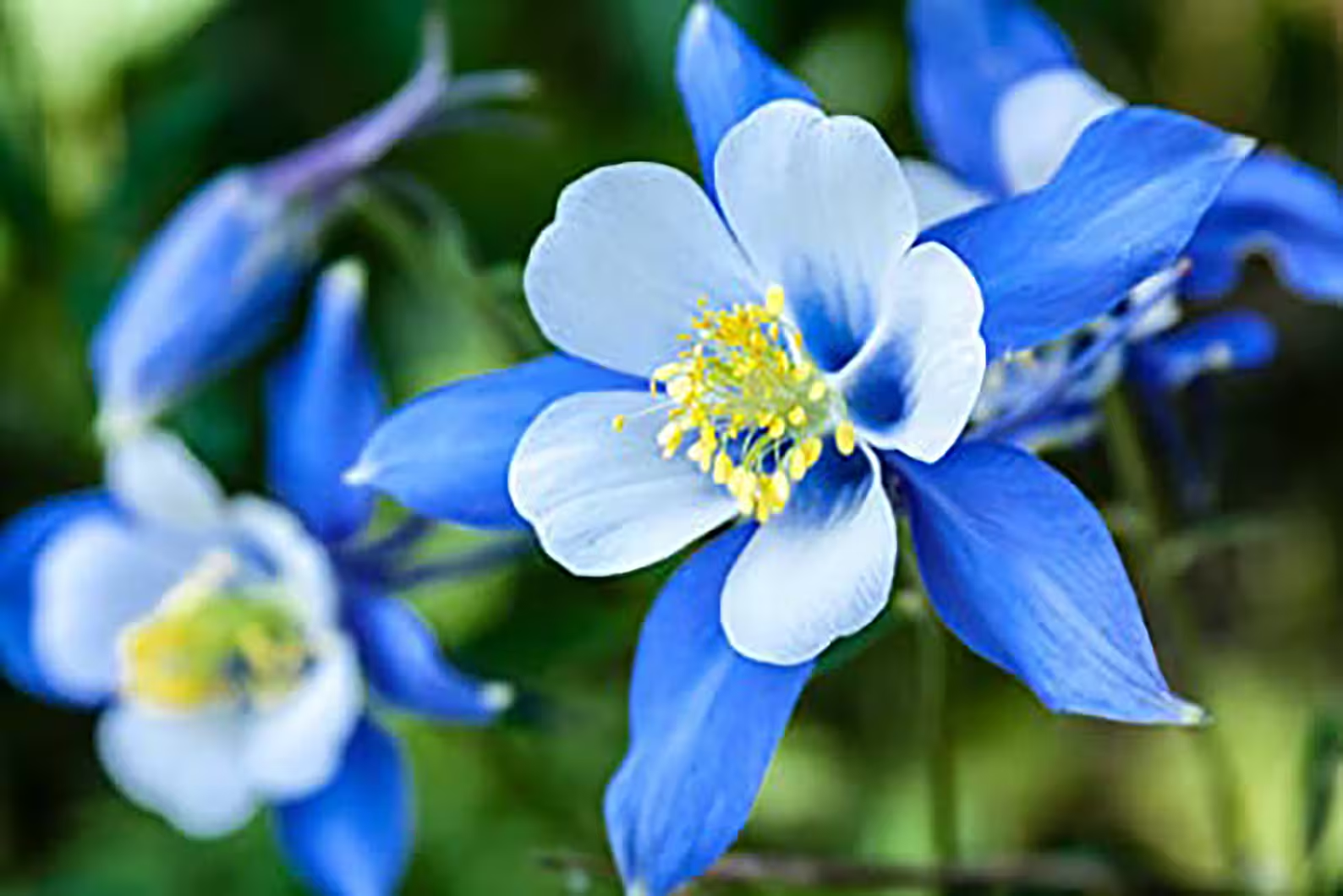
Cultivation
Please bear in mind that aquilegias grow wild in the hills, mountains and woodlands from cool regions around the world. So, for us gardeners the more closely their natural conditions are reproduced the better they will grow. To get new plants initially established, plant them in a good quality compost dressed very generously with Seamungus, a pelletised seaweed and fish product, water often until established, and again when the summer heat arrives. Remember full sun in winter and near full shade in summer, dressed with a good quality compost.
Valuable lessons can also be learnt from the two before mentioned gardens. It is the annual, enriching and slowly decaying and composting mulch of autumn leaves, which must provide the answers to their successful cultivation.
If the conditions are right, who knows, it may well be the adoption of an attitude of just walk away and leave them well alone, and that is the key to their future longevity and prosperity.
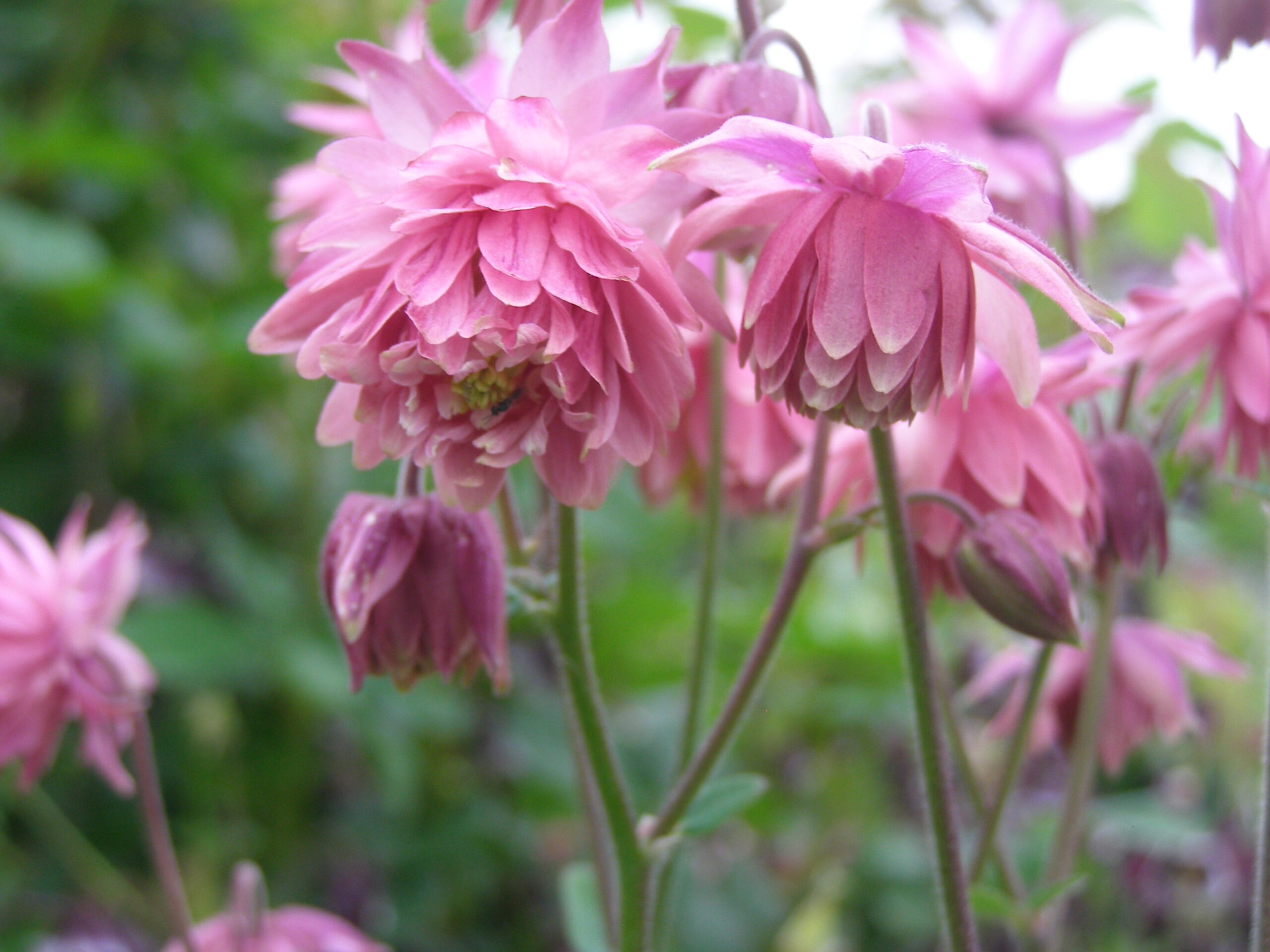
Propagation
Sow seeds in autumn and buy punnets or small pots in autumn through to spring. If you have established plants you can dig them up and divide the roots in winter. You can also buy them dormant, with reasonably well established root systems in bulb packs similar to that of daffodils, in late winter.
Regardless of my past dismal efforts in cultivating Aquilegias, I do not want other gardeners to decide they are just too difficult to grow. The proof of evidence is loud and clear in their easy happiness and proliferation in the before mentioned gardens. One day I will get it right, and I dearly hope that the day will arrive very soon, as in tomorrow, maybe.
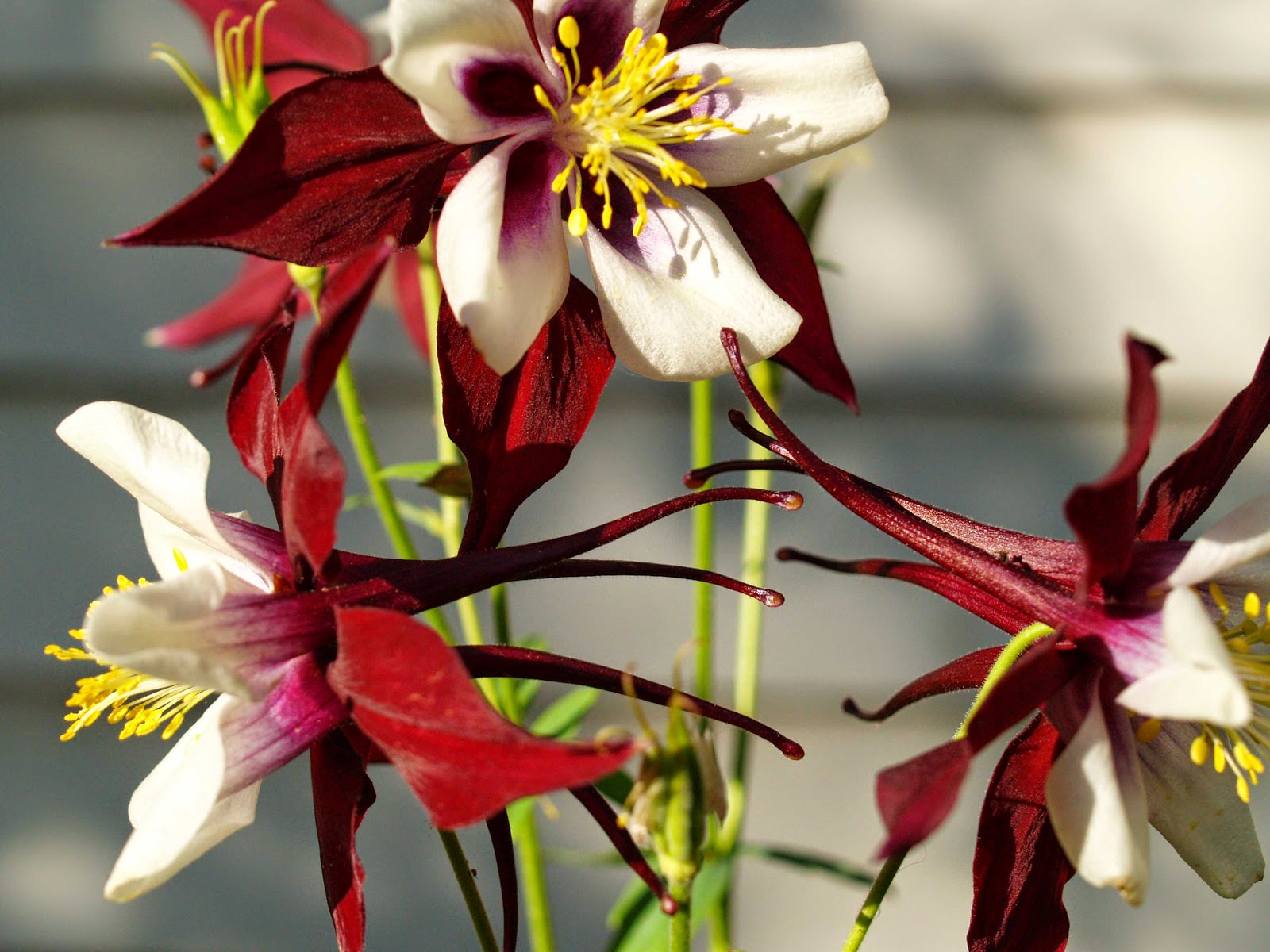
Happy gardening and have fun,
Regards Ned McDowell